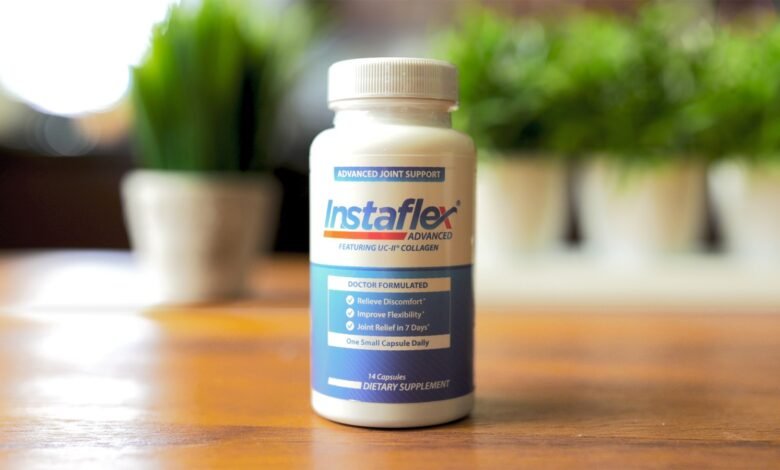7 Serious Instaflex Side Effects You Need to Know

Discover potential Instaflex side effects, including digestive issues, headaches, and allergic reactions. Learn about who should avoid Instaflex and how to minimize risks.
Instaflex is a popular joint support supplement marketed to alleviate joint pain and improve mobility. While it may offer benefits for some, it’s crucial to be aware of potential Instaflex side effects. This article will delve into the most common and serious adverse reactions associated with this supplement.
1. Digestive Issues
One of the most frequently reported Instaflex side effects is digestive upset. This can manifest as:
- Stomach cramps: These can range from mild discomfort to severe abdominal pain.
- Diarrhea: Loose stools or frequent bowel movements are common.
- Nausea: Feelings of sickness and an urge to vomit can occur.
- Constipation: Difficulty passing stools is another potential issue.
These digestive problems are often linked to the ingredients in Instaflex, particularly glucosamine and chondroitin, which can sometimes irritate the gastrointestinal tract.
2. Headaches
Headaches are another common Instaflex side effect experienced by some users. These can vary in intensity from mild to severe and may be accompanied by other symptoms such as dizziness, fatigue, and sensitivity to light.
The exact cause of Instaflex-induced headaches is not always clear. Some theories suggest that certain ingredients in the supplement may interact with medications or have unintended effects on blood vessels in the brain.
3. Allergic Reactions
Allergic reactions to Instaflex are possible, although relatively rare. Symptoms can range from mild to life-threatening and may include:
- Skin rashes: Hives, itching, and redness are common manifestations.
- Swelling: This can occur in various parts of the body, including the face, lips, and tongue.
- Difficulty breathing: Wheezing, shortness of breath, and chest tightness can be signs of a severe allergic reaction.
- Anaphylaxis: This is a medical emergency characterized by a sudden drop in blood pressure, rapid heartbeat, and loss of consciousness.
If you experience any signs of an allergic reaction after taking Instaflex, seek immediate medical attention.
4. Liver Problems
In some cases, Instaflex may cause liver problems. This is more likely to occur in individuals with pre-existing liver conditions or those taking other medications that can affect liver function.
Symptoms of liver problems can include:
- Jaundice: Yellowing of the skin and eyes.
- Abdominal pain: Discomfort or tenderness in the upper right abdomen.
- Dark urine: The urine may appear darker than usual.
- Light-colored stools: The stools may appear pale or clay-colored.
- Fatigue: Feeling unusually tired or weak.
If you experience any of these symptoms while taking Instaflex, consult your doctor immediately.
5. Kidney Issues
While less common, Instaflex may also cause kidney problems in some individuals. This is particularly concerning for people with pre-existing kidney disease or those taking medications that can impair kidney function.
Signs of kidney problems can include:
- Swelling: Swelling in the ankles, feet, and legs.
- Reduced urine output: Producing less urine than usual.
- Blood in the urine: Noticing blood or other abnormalities in your urine.
- Fatigue: Feeling unusually tired or weak.
If you experience any of these symptoms while taking Instaflex, consult your doctor immediately.
6. Drug Interactions
Instaflex can interact with certain medications, potentially leading to serious side effects. Some medications that may interact with Instaflex include:
- Blood thinners: Instaflex may increase the risk of bleeding when taken with blood thinners such as warfarin and aspirin.
- Immunosuppressants: These medications can weaken the immune system and may increase the risk of side effects from Instaflex.
- Antibiotics: Some antibiotics may interact with Instaflex and increase the risk of side effects.
It’s crucial to inform your doctor about all medications and supplements you are taking before starting Instaflex.
7. Worsening of Existing Conditions
Instaflex may worsen certain existing health conditions. For example, individuals with diabetes should use caution as Instaflex may affect blood sugar levels.
People with gastrointestinal disorders may also experience an exacerbation of their symptoms while taking Instaflex.
Who Should Avoid Instaflex?
- Pregnant and breastfeeding women: There is insufficient data on the safety of Instaflex during pregnancy and breastfeeding.
- Individuals with severe allergies: People with allergies to shellfish (due to the presence of shellfish extracts in some Instaflex products) should avoid this supplement.
- Individuals with liver or kidney disease: As mentioned earlier, Instaflex may worsen existing liver or kidney problems.
- People taking certain medications: Individuals taking blood thinners, immunosuppressants, antibiotics, or other medications that may interact with Instaflex should consult their doctor before use.
Minimizing Instaflex Side Effects
- Start with a low dose: Begin with a low dose of Instaflex and gradually increase as tolerated.
- Take with food: Taking Instaflex with food can help reduce the risk of digestive upset.
- Stay hydrated: Drink plenty of water throughout the day while taking Instaflex.
- Monitor for side effects: Pay close attention to your body and stop taking Instaflex immediately if you experience any concerning side effects.
- Consult your doctor: Always consult your doctor before starting any new supplement, especially if you have any underlying health conditions or are taking other medications.
Disclaimer: This information is for educational purposes only and should not be considered medical advice. Always consult with a qualified healthcare professional before starting any new supplement or if you have any concerns about your health.
Conclusion
While Instaflex may offer some benefits for joint health, it’s essential to be aware of the potential side effects. This supplement can cause digestive issues, headaches, allergic reactions, and may interact with certain medications.
Individuals with pre-existing health conditions, pregnant or breastfeeding women, and those taking certain medications should exercise caution or avoid Instaflex altogether.
By starting with a low dose, taking Instaflex with food, staying hydrated, and monitoring for side effects, you can minimize the risk of adverse reactions.
Always consult with your doctor before starting any new supplement to ensure it is safe and appropriate for you.
You May Also Read This UsabizPro.




